During our entire trip in Yangon, R and I have became our own tour guides. As we were approaching a place of interest, both R and I would take turns to read out the commentaries to each other from our guide books.
At Shwethalyaung Buddha, we found the pale white, massive, reclining buddha resting on jeweled chests that were stacked up. On the side of these chests were mosaic paintings, each with a story to tell. Long the back of the buddha were a series of paintings which tell the story of the Shwethalyaung Buddha as described earlier.
After we had pilgrimed around the buddha statue, we walked to the entrance hall where tiny shops lined on both sides, selling textiles and handicrafts. I got a few items from different stalls including three pieces of textile. There were two young girls who kept pressuring us to buy postcards or fans. We kept declining as we've bought some during our earlier visits.
R was getting a longyi made. The bought textile was brought to the market outside the temple where the sewing was done. On barefoot, we followed the vendor. The girls continued to convince us to make a purchase. Just next to the temple fence, stalls pieced together by wooden beams and planks house merchandise of textiles, food and handicrafts. It seemed that the vendor belongs to a family of seamstresses as two ladies took turns to pedaled away on the sewing machine while the two girls stood persistent in making sales. We gave in eventually. They were really nice people. They kept asking us questions about our country and were fascinated by us, perhaps, just as we were by them. Someone asked if we wanted to buy a section of tanaka. I didn't know what a tanaka is then. Although we had declined, they stayed eager to show us what it is. The split section of the tanaka was rubbed in a circular motion over a stone disc that has been sprinkled with water. Out came the creamy liquid (a mixture of the water and the tanaka powder from the plant), which willing fingers scoped to smear them on our cheeks. So, what is tanaka? Apparently, it is the most common Japanese surname. But, in Myanmar, tanaka is a plant which is believed to be a good remedy as sunblock, moisturiser and deodorant. It is very common to find Myanmar people with their face smeared with yellowish paste.
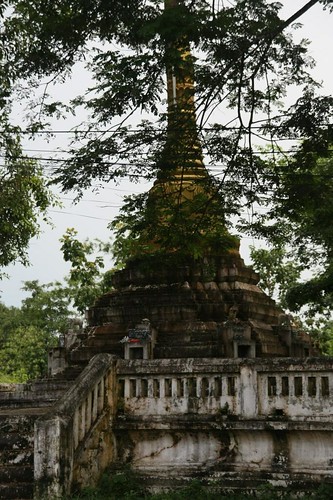
Reclining buddha on pillows of jeweled chests

Buddha in a hall
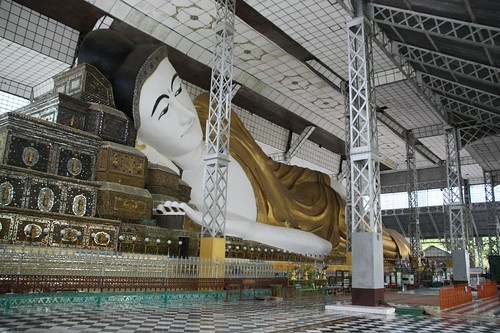
Mosaic paintings on the side of the jeweled chests
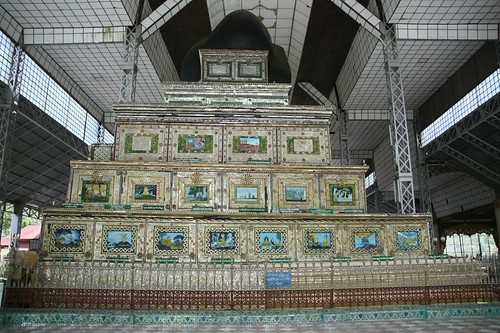
Mosaic painting
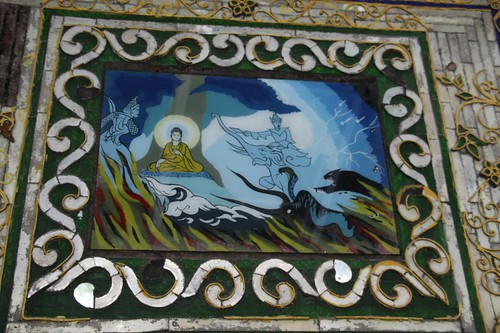
Painting of how the idol cracked when the Mon girl prayed in front of it
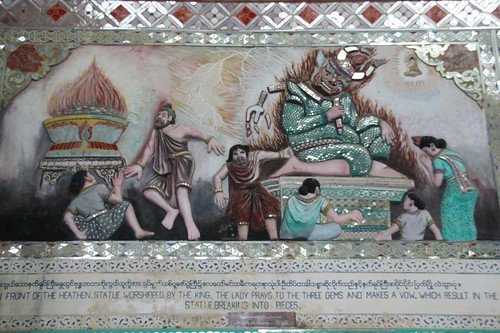
The story ended with the people becoming Buddhists
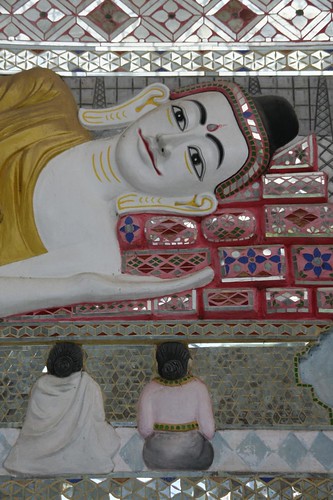
The soles of the reclining buddha
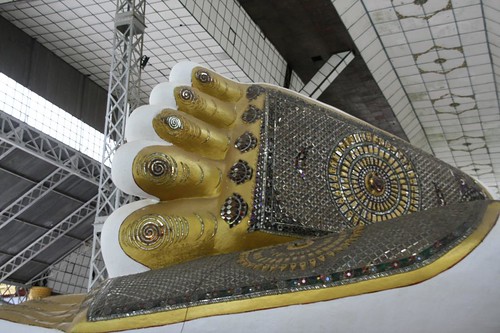
Sign of nirvana made up of many smaller symbols

Seamstress sewing R's sakura longyi
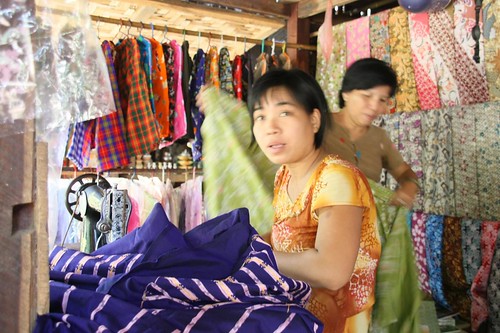
Mixing tanaka powder from the stem with water on a stone disc
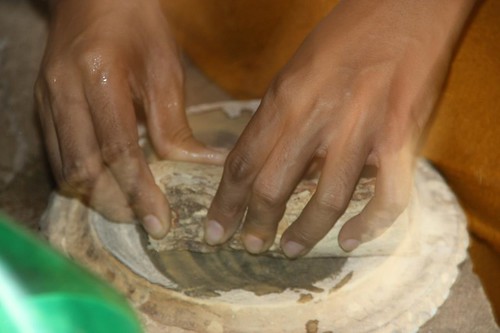
Another seamstress taking over to finish the work

No comments:
Post a Comment